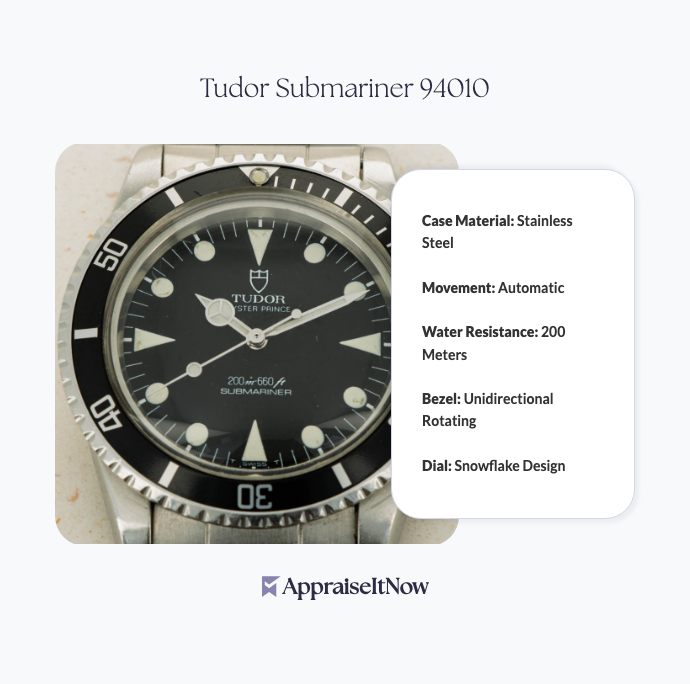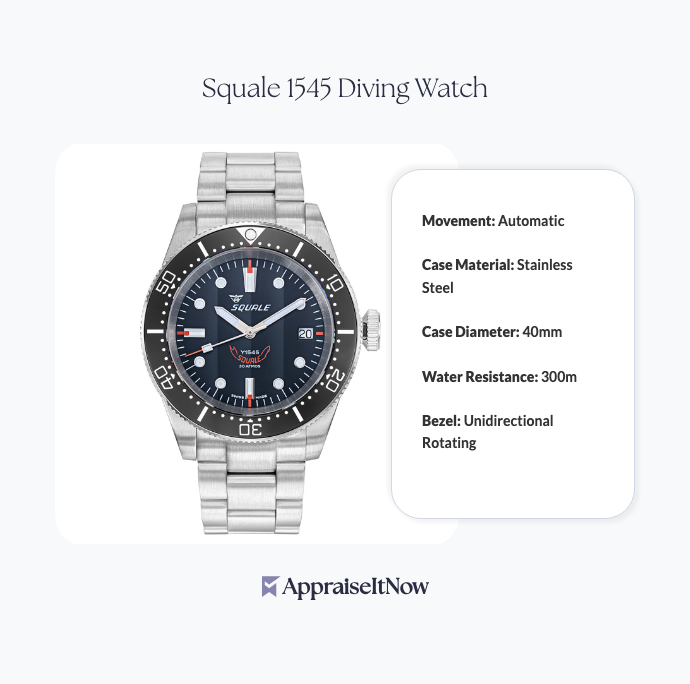<h1>How to Get Your Elgin B.W. Raymond Appraised</h1>
<p>If you've inherited or acquired an Elgin B.W. Raymond pocket watch, you're holding a genuine piece of American horological heritage. These iconic timepieces, valued between <strong>$1,000 and $2,000</strong>, represent some of the finest craftsmanship the Elgin National Watch Company ever produced. Understanding how to properly appraise your B.W. Raymond ensures you know its true worth whether you're considering selling, insuring, or simply documenting your collection.</p>
<h2>Understanding Your Elgin B.W. Raymond's Value</h2>
<p>The Elgin B.W. Raymond wasn't just another pocket watch. First introduced in <strong>1890</strong>, this model became one of Elgin's flagship products, renowned for exceptional craftsmanship and timekeeping accuracy that still impresses collectors today. The B.W. Raymond features a distinctive <strong>14k gold filled case</strong> paired with a high-quality nickel-finished movement, accompanied by intricate engraved detailing that exemplifies the meticulous attention characteristic of Elgin's finest timepieces.</p>
<p>What drives the current <strong>$1,000–$2,000 market value</strong>? Scarcity plays a significant role. Despite Elgin's large production capacity, the B.W. Raymond remains relatively uncommon on today's collector's market, creating consistent demand among serious horologists. When collectors ask themselves, "Is my Elgin pocket watch worth anything?" the answer depends on several factors, but generally speaking, a B.W. Raymond in good condition represents a valuable acquisition.</p>
<div class="callout tip"><p><strong>Collector's Insight</strong></p>
<p>Elgin pocket watches with pristine cases and documented original movements often command premiums at the upper end of the valuation range, while examples requiring restoration may fall toward the lower end.</p></div>
<h2>Key Factors That Determine Your Appraisal Value</h2>
<p>Not all Elgin B.W. Raymonds are valued equally. Your appraisal value depends on several interconnected factors that professional appraisers evaluate during the assessment process.</p>
<p>Condition stands as the primary driver. A watch with original finish, intact crystal, crisp dial markings, and a fully functional movement will appraise significantly higher than one showing signs of wear, corrosion, or repair. The case material—whether authentic 14k gold filled or solid gold—directly impacts worth. Original gold filled cases retain strong value, while solid gold examples command premium pricing.</p>
<p>Completeness matters considerably. A B.W. Raymond with its original chain, original box documentation, or factory paperwork can add 15-25% to the base appraisal value. Conversely, missing components or non-original additions may reduce value. The movement condition deserves particular attention; Elgin movements built during this era were exceptionally well-designed, and a movement showing minimal wear with crisp jewels and perfect functionality indicates an excellent specimen.</p>
<p>Rarity elements also influence pricing. Certain dial variations, case back designs, or manufacturing anomalies can make specific examples more desirable to specialists. Is Elgin a high-end watch? The brand's reputation for precision and durability absolutely positions it in the higher echelon of American watchmaking, particularly for examples like the B.W. Raymond that represent the company's premium offerings.</p>
<div class="callout note"><p><strong>Professional Appraisal Insight</strong></p>
<p>Appraisers with <a href="/blog/appraising-luxury-watches-determining-the-value-of-timepiece-investments">watch and timepiece expertise</a> examine movement caliber, case serial numbers, and production dates to authenticate B.W. Raymond examples and position them accurately within the current market.</p></div>
<h2>Identifying Your B.W. Raymond's Age and Authenticity</h2>
<p>Many collectors wonder how they can tell how old their Elgin pocket watch is. The answer lies in understanding Elgin's serial numbering system and production records. The B.W. Raymond's serial number—typically engraved inside the case back or on the movement—corresponds directly to its manufacturing date. Elgin maintained comprehensive production records that qualified appraisers can access, allowing precise dating within narrow windows.</p>
<p>The B.W. Raymond case back usually bears the Elgin National Watch Company mark along with patent information and metal content specification. Authentic examples consistently show <strong>"14K G.F."</strong> (gold filled) or <strong>"Solid Gold"</strong> markings. If you're examining your watch and these hallmarks appear missing or unclear, professional authentication becomes essential before finalizing any appraisal.</p>
<p>How do you check the value of your watch? A certified professional appraisal begins with hands-on examination. Appraisers inspect the case exterior for damage, refinishing, or replacement parts. They examine the dial for original printing, cracks, or professional restoration. Most importantly, they evaluate the movement by removing the case back and examining the jewels, balance wheel, and overall mechanical condition.</p>
<p>The question about whether all Elgin watches are real gold has an important answer: many Elgin watches, including standard B.W. Raymond models, use gold-filled construction rather than solid gold. Gold filled involves a layer of gold bonded to a base metal core—a legitimate and durable technique that remains valuable, though less precious than solid gold examples. Recognizing this distinction is crucial for accurate appraisal.</p>
<h2>When Should You Seek Professional Appraisal?</h2>
<p>You should obtain a professional appraisal of your Elgin B.W. Raymond in several specific situations. If you're planning to sell your watch through auction houses or private sale, an appraiser's certification provides documentation that establishes market-appropriate pricing and builds buyer confidence. Estate planning often requires formal valuations for property distribution or inheritance tax purposes. Insurance coverage—whether homeowners, specialty collectibles, or fine arts policies—typically demands professional appraisals documenting replacement cost.</p>
<p>Legal proceedings involving asset division also necessitate certified appraisals from qualified experts. Beyond these practical scenarios, many collectors simply want accurate documentation of their collection's worth for personal knowledge and planning purposes. Vintage Elgin watches, particularly quality examples like the B.W. Raymond, have demonstrated steady value appreciation over decades, making periodic appraisals wise strategy for monitoring your investment.</p>
<p>Are vintage Elgin watches good investments? Historical market data suggests they perform well as collectibles, particularly if properly maintained and preserved. The B.W. Raymond's status as one of Elgin's premium models—combined with its historical significance dating to the 1890s—positions it favorably compared to mass-market pocket watch alternatives.</p>
<h2>The Role of Provenance and Documentation</h2>
<p>Your B.W. Raymond's documented history significantly influences appraisal outcomes. Did you inherit the watch from a known collector? Can you demonstrate continuous ownership within your family? Do you possess original factory documentation, instruction manuals, or purchase receipts? These elements constitute provenance—the documented ownership chain—and appraisers weight them heavily.</p>
<p>Similar to how <a href="/types/memorabilia-and-collectibles">memorabilia and collectibles</a> valuations benefit from clear provenance, your Elgin B.W. Raymond appraises more favorably with comprehensive documentation. Photographs showing the watch in its inherited condition, any correspondence mentioning its history, or family records indicating acquisition dates all strengthen the appraisal's authority and buyer confidence if you eventually decide to sell.</p>
<p>Professional appraisers compile this contextual information alongside physical examination findings, creating comprehensive valuations that document not just monetary worth but historical significance. This documentation proves invaluable when communicating with insurance companies, potential buyers, or estate executors who need detailed justification for the assessed value.</p>
<h2>What Makes Elgin Watches Valuable?</h2>
<p>Understanding what drives Elgin's collectible market helps contextualize your B.W. Raymond's position. The Elgin National Watch Company, founded in 1864, established itself as one of America's premier watchmakers through unwavering commitment to precision and innovation. The company's pocket watches equipped railroad workers who depended on accurate timekeeping for safety, establishing Elgin's reputation for reliability that persists among collectors.</p>
<p>The B.W. Raymond specifically represents Elgin at its finest. Named after an early company official, the B.W. Raymond model incorporated all the manufacturing refinements Elgin had developed through decades of experience. The nickel-finished movement—superior to cheaper brass alternatives—resisted corrosion and maintained accuracy. The 14k gold-filled case provided durability and visual appeal without the cost of solid gold.</p>
<p>These design choices explain why collectors actively seek B.W. Raymond examples despite the existence of thousands of other vintage pocket watches. The model represents a convergence of engineering excellence, aesthetic refinement, and historical significance. When appraisers evaluate your watch, they're assessing not merely an object but a snapshot of American manufacturing at its peak, with documentation proving its creators' commitment to excellence.</p>
<div class="callout tip"><p><strong>Historical Context</strong></p>
<p>The Elgin B.W. Raymond entered production during America's Gilded Age when quality manufacturing distinguished prestigious makers from mere competitors, positioning these watches as heirlooms rather than disposable goods.</p></div>
<h2>Comparing Your B.W. Raymond to Other Elgin Models</h2>
<p>Not all Elgin pocket watches command equal value. Entry-level Elgin models from the same era typically appraise between $400–$800, while the B.W. Raymond's premium positioning reflects its superior materials and finishing. This price differential isn't arbitrary; it reflects how collectors consistently differentiate between standard offerings and flagship models. What is the value of an Elgin? The answer depends entirely on which model you own, its condition, and when it was manufactured.</p>
<p>The question about how much a 1925 Elgin pocket watch is worth illustrates this variability. A common 1925 Elgin model might appraise around $600, while a 1925 B.W. Raymond in equivalent condition would likely exceed $1,500. This distinction matters tremendously when you're seeking accurate valuation. Professional appraisers differentiate between models by examining movement caliber, case styling, and manufacturing details—expertise that casual collectors often lack.</p>
<h2>Spotting Fakes and Reproduction Concerns</h2>
<p>As valuable vintage Elgin watches attract collector interest, reproduction and misrepresented examples occasionally appear in the market. How to spot a fake Elgin watch requires understanding authentic design elements and manufacturing characteristics. Genuine B.W. Raymond examples display consistent engraving quality with crisp, deep markings. The movement finishing shows meticulous hand-polishing and precise jewel placement. The dial printing uses period-appropriate inks that don't flake or fade.</p>
<p>Reproductions often exhibit telltale signs when examined closely: shallow engraving, inconsistent spacing, crude riveting, or modern printing techniques on dials. Movement examination reveals the most obvious distinctions—authentic Elgin movements display sophisticated design with quality jewels and precise spacing, while reproductions cut corners in areas visible only to trained appraisers.</p>
<p>Professional authentication services protect you whether you're purchasing a B.W. Raymond or validating one you already own. An appraiser with <a href="/blog/what-you-need-to-know-about-rare-watch-appraisals">antique watch expertise</a> can definitively establish authenticity and document findings in a formal report, eliminating doubt about your acquisition's legitimacy.</p>
<h2>Getting Your Appraisal from AppraiseItNow</h2>
<p>The appraisal process begins with submitting photographs and descriptions of your Elgin B.W. Raymond through AppraiseItNow's secure online platform. Our tech-enabled system connects you with credentialed appraisers (AAA, ISA, ASA, CAGA, AMEA certified) specializing in vintage timepieces and <a href="/blog/understanding-the-value-of-jewelry-appraisals-for-precious-gems-and-metals">watch and jewelry appraisals</a>.</p>
<p>For your B.W. Raymond, provide clear photos showing the case exterior, case back with markings, dial, movement (if accessible), and any original documentation. Include details about the watch's history, condition notes, and whether you're seeking appraisal for sale, insurance, or collection documentation purposes. Our appraisers conduct comprehensive evaluation, examining all accessible elements and cross-referencing your watch against comparable market sales data.</p>
<p>The resulting USPAP-compliant appraisal provides detailed condition assessment, authenticated dating, market value determination, and photographic documentation—exactly what insurance companies, auction houses, and estate professionals require. This certification transforms your informal understanding of your B.W. Raymond's worth into defensible professional valuation.</p>
<div class="callout note"><p><strong>Key Takeaway</strong></p>
<p>Your Elgin B.W. Raymond pocket watch represents a valuable piece of American watchmaking heritage worth $1,000–$2,000 in good condition. A certified appraisal from qualified experts provides the documentation, authentication, and market-accurate valuation essential for confident selling, proper insurance coverage, or informed collection management.</p></div>







.avif)







